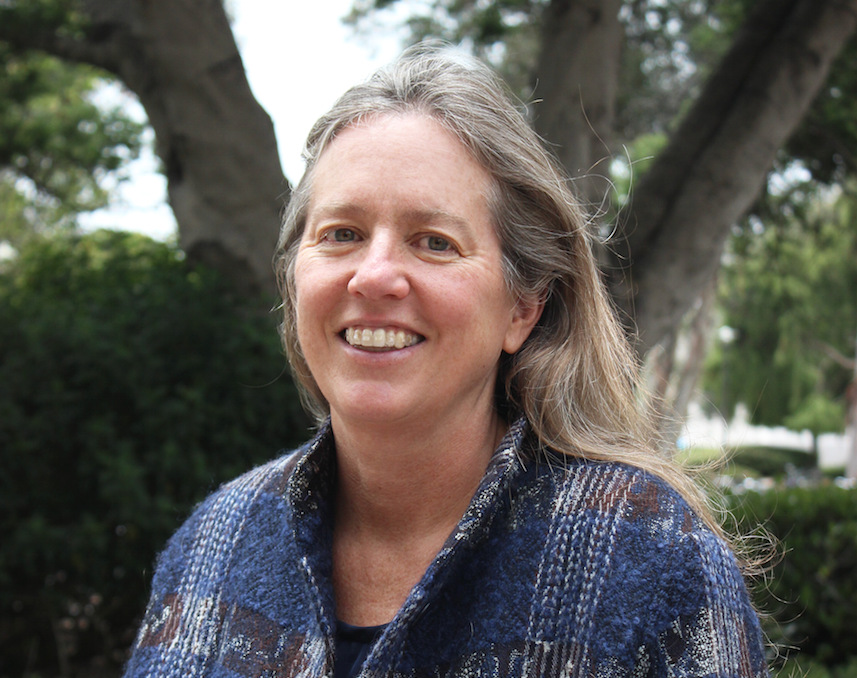
Beyond Boundaries
UC Santa Barbara physicist Jean Carlson has been named a fellow of the American Physical Society (APS). Recognized for “exceptional contribution to the physics enterprise in physics research, important applications of physics, leadership in or service to physics, and significant contributions to physics education.” She joins 154 newly minted fellows across the country who have been selected for the honor this year.
“I’m happy to be recognized in this way,” said Carlson, a statistical physicist who was cited “for the development of mathematically rigorous, physics-based models of nonlinear and complex systems that have significantly impacted a broad range of fields including neuroscience, environmental science and geophysics.”
“One of the things I’ve been pleased to see when I’ve attended the APS March Meeting in recent years is that this interdisciplinary branch of physics has grown and diversified, and increasingly welcomes participation of scientists and engineers from other disciplines.”
“I congratulate Jean Carlson on being named a fellow of the American Physical Society,” said Pierre Wiltzius, UC Santa Barbara dean of mathematical, life and physical sciences. “Her research in complex systems and the resulting applications in a wide variety of areas including neuroscience and earth science are certainly worthy of this distinction. This recognition by her peers is a testament to her leadership and prominence in her field.”
A Broad Reach
What others might see as a baffling, complex system with many moving parts and interactions, Carlson sees as an opportunity to explore the physics that underlies it all, whether it be the movement of the earth under our feet or the vast number of interactions between microbes in our gut microbiome. She’s also examined topics as diverse as forest fires, human brain networks, bone density and even the internet.
Her broad reach is one she has cultivated right from the start. During her Ph.D. work at Cornell, Carlson investigated mathematical physics problems such as glassy systems and disorder, and explored biophysics problems having to do with lung surfactant, which enables expansion and contraction during breathing and is developmentally important in newborns.
“But really it was when I first came to UCSB that this interdisciplinary approach really took off for me,” she said. As a postdoc in the Institute for Theoretical Physics in the late 1980s, her first interdisciplinary collaboration was with earth scientists, studying the dynamics of friction and sliding at interfaces — work that quickly became relevant at a time when California experienced a succession of major earthquakes.
So began a career crossing disciplinary boundaries with her physics, applying her expertise to relevant problems and teaching others to do the same. As a result, her students are well trained in applying statistical physics to various other fields, and finding careers at the cutting edge of geophysics, bioengineering and neuroscience, to name a few.
The interdisciplinary approach has since taken off as well, with teams of scientists from diverse disciplines coming together to tackle the big problems.
“I think that we were just early in thinking this way,” Carlson said of UCSB’s research environment. “It’s often the perspective that is not entrenched in a particular disciplinary silo that generates new ideas.”
The creative, open-to-possibilities approach is one she has been imparting to younger students as well. As the founder and faculty advisor to UCSB’s Physics Circus, one of the campus’s first educational outreach programs, Carlson leads a team of UCSB grad students and undergrads who visit K-12 campuses (they’ve been doing so lately by Zoom) to bring physics concepts to life, with demonstrations on physics topics meant not just to teach but also to whet appetites for science. The goal is to create a foundation from which future scientists can speak more than one scientific language, ask the right questions, and solve both longstanding and emerging problems.
“It’s a combination of collaboration, friendships, connections, and being in a place where there is a fertile ground for interactions,” she said.



